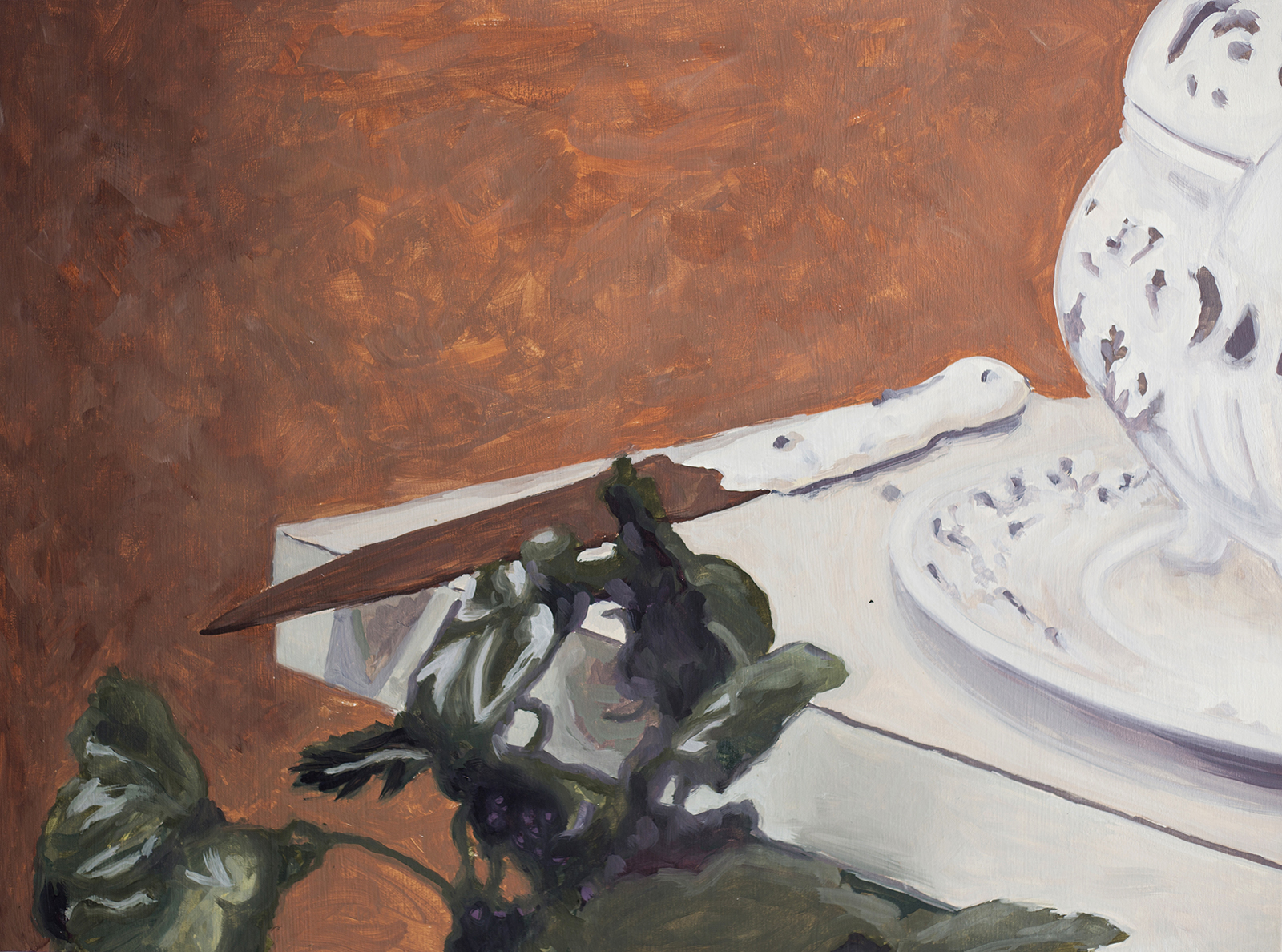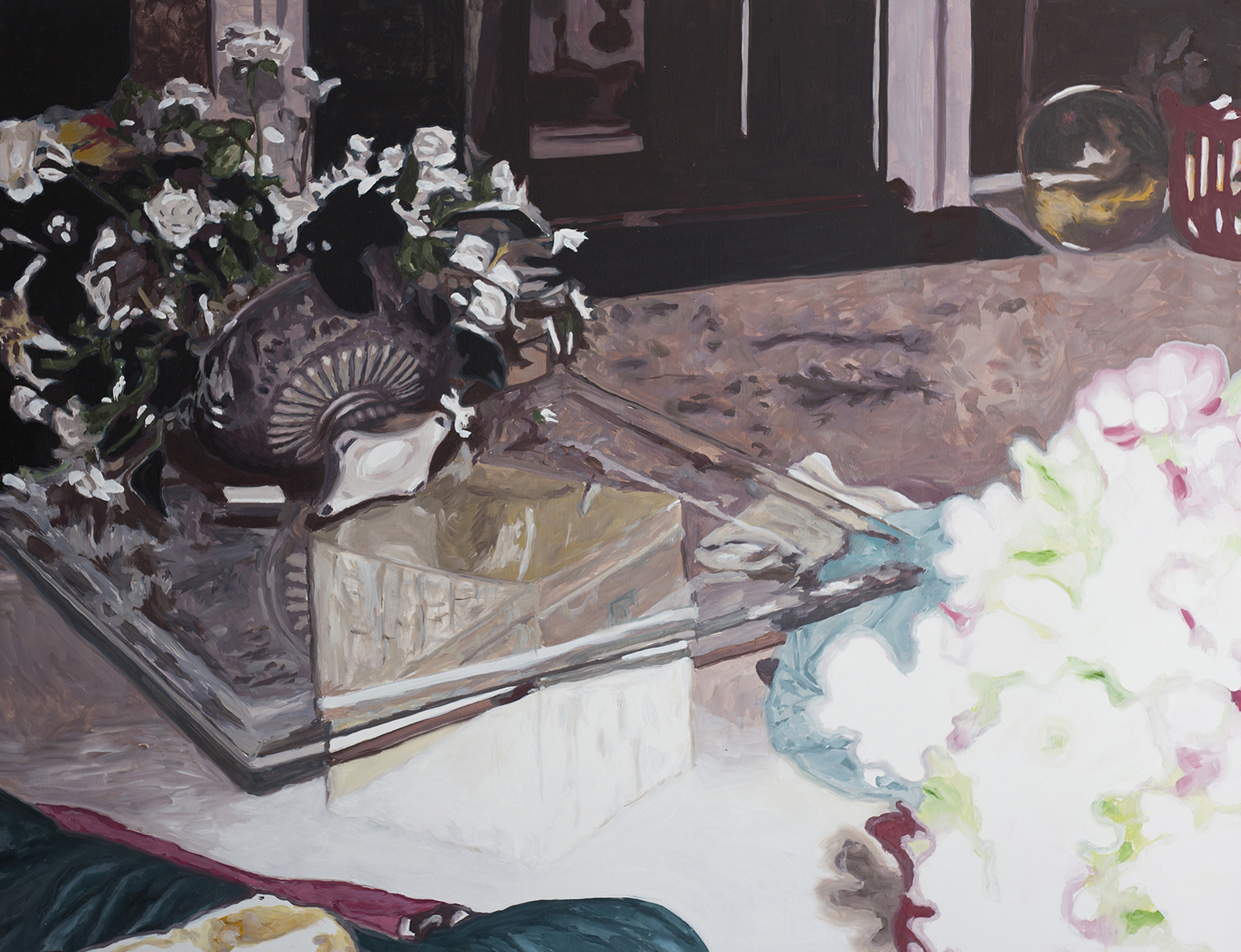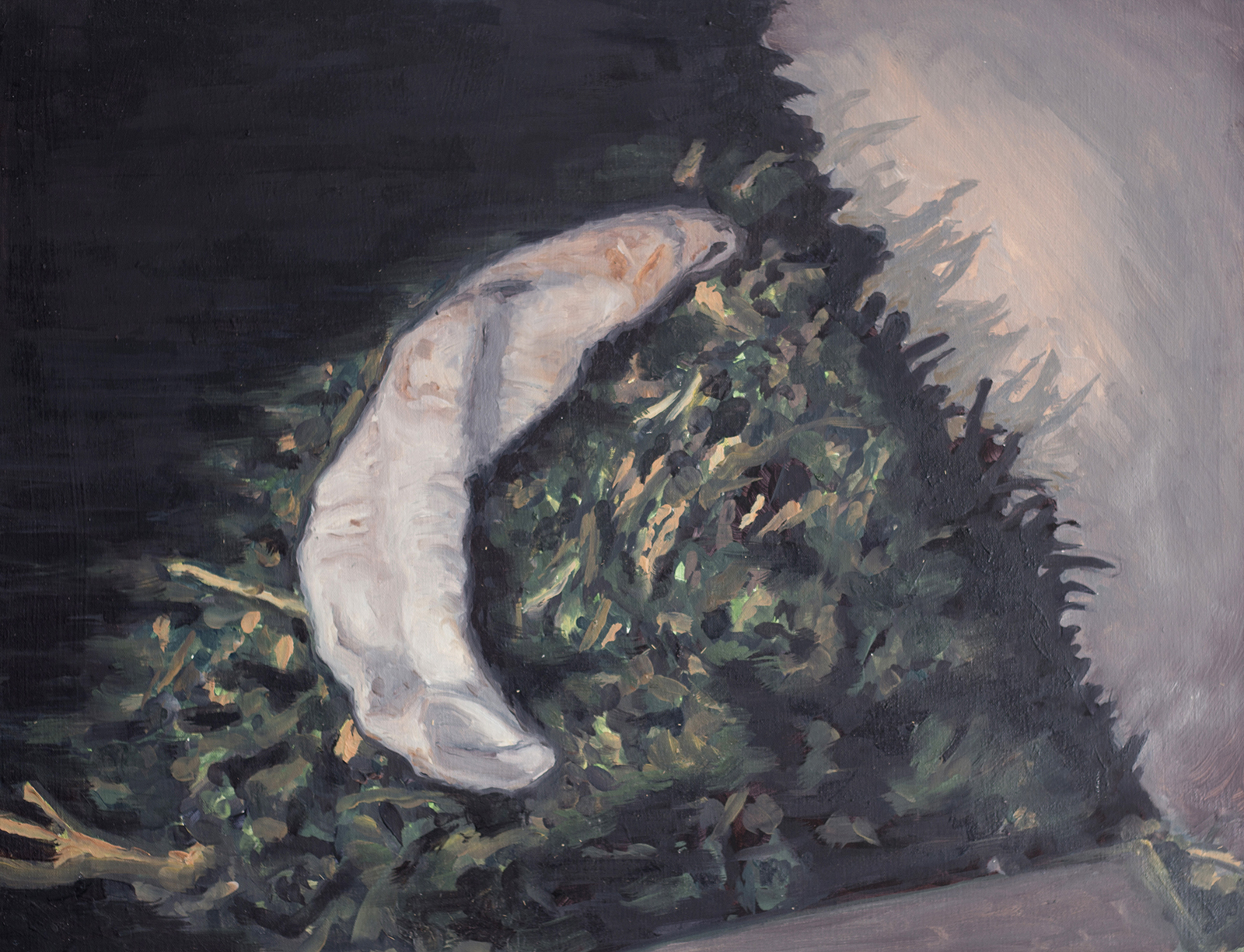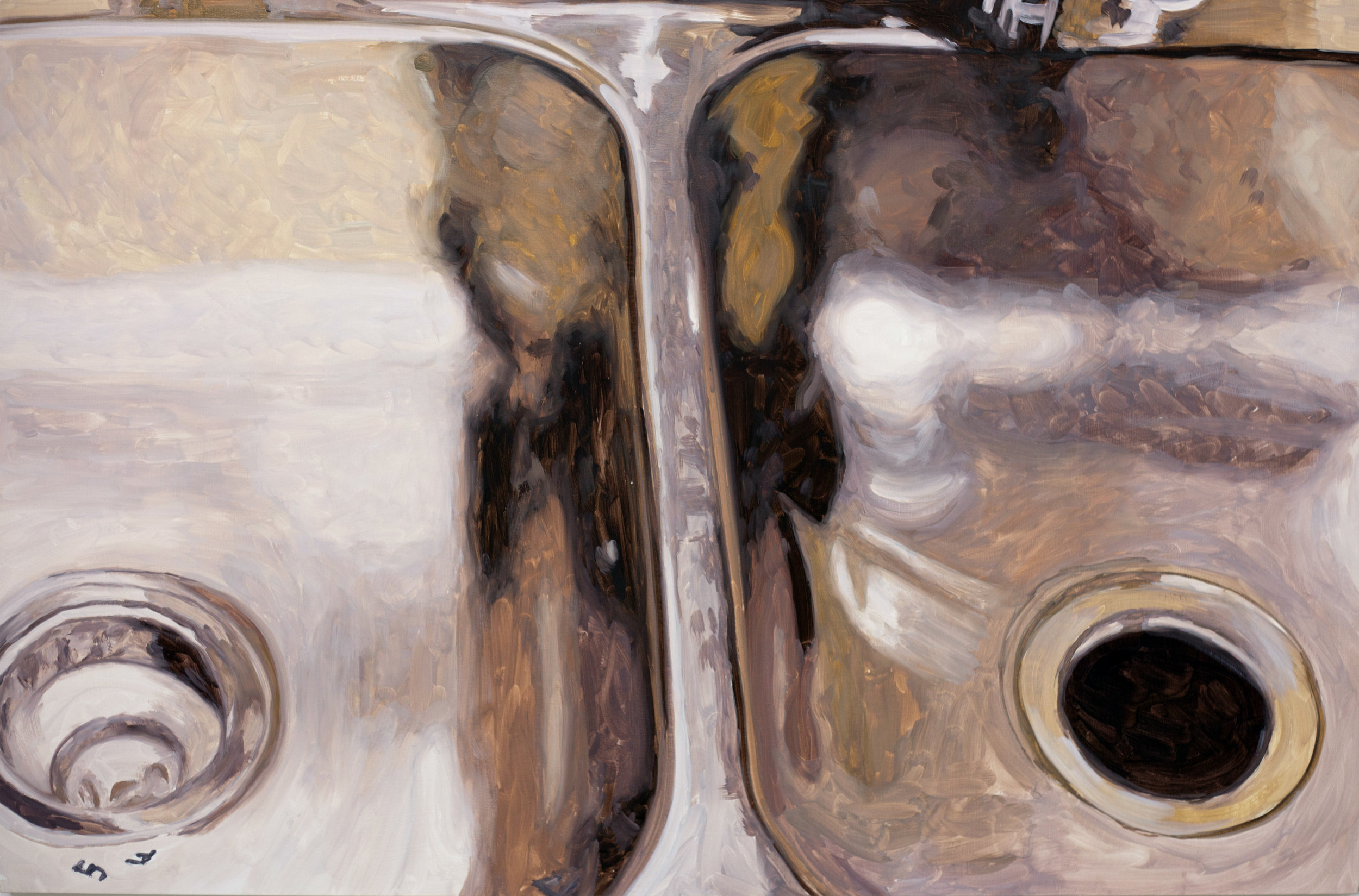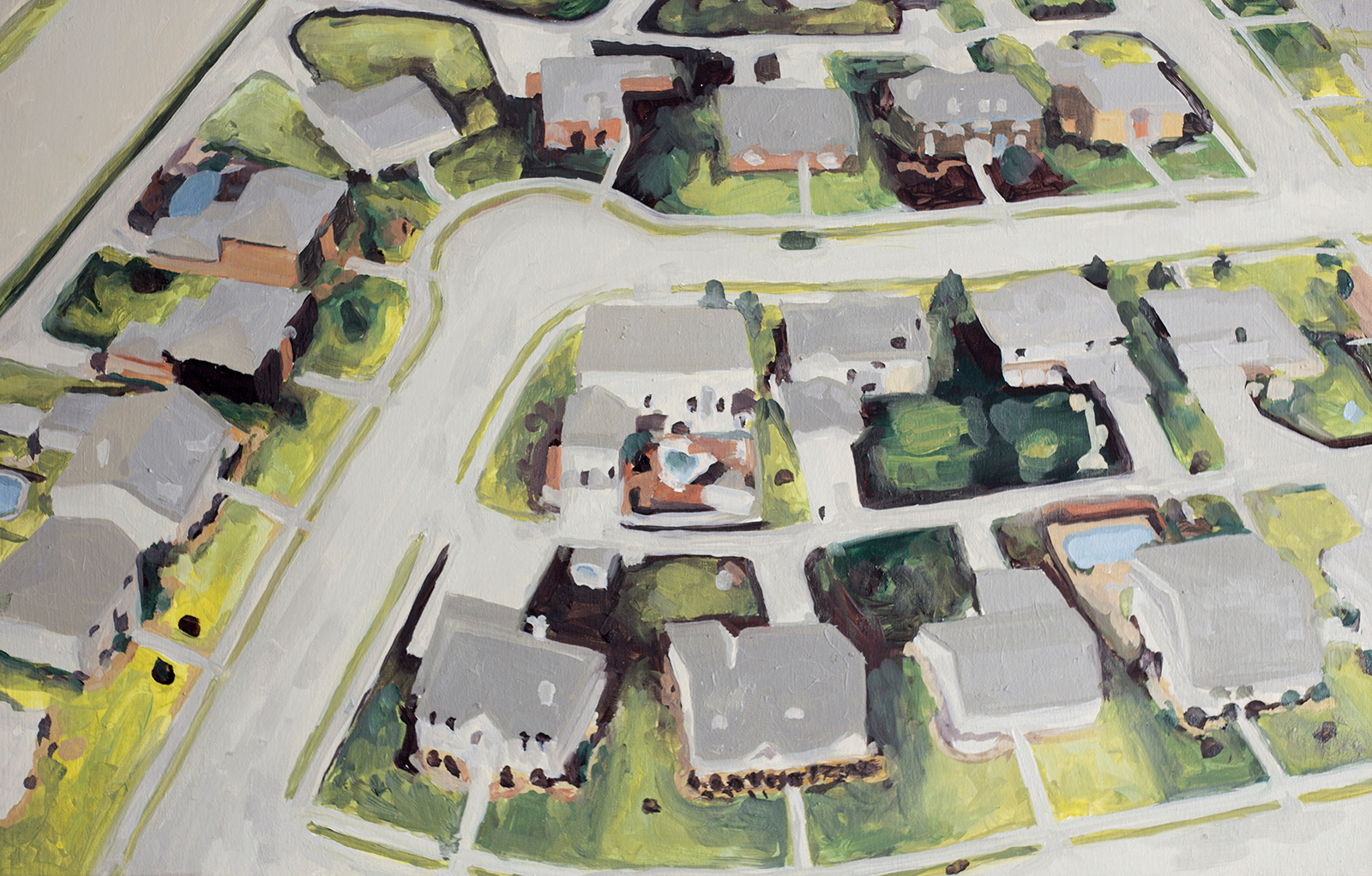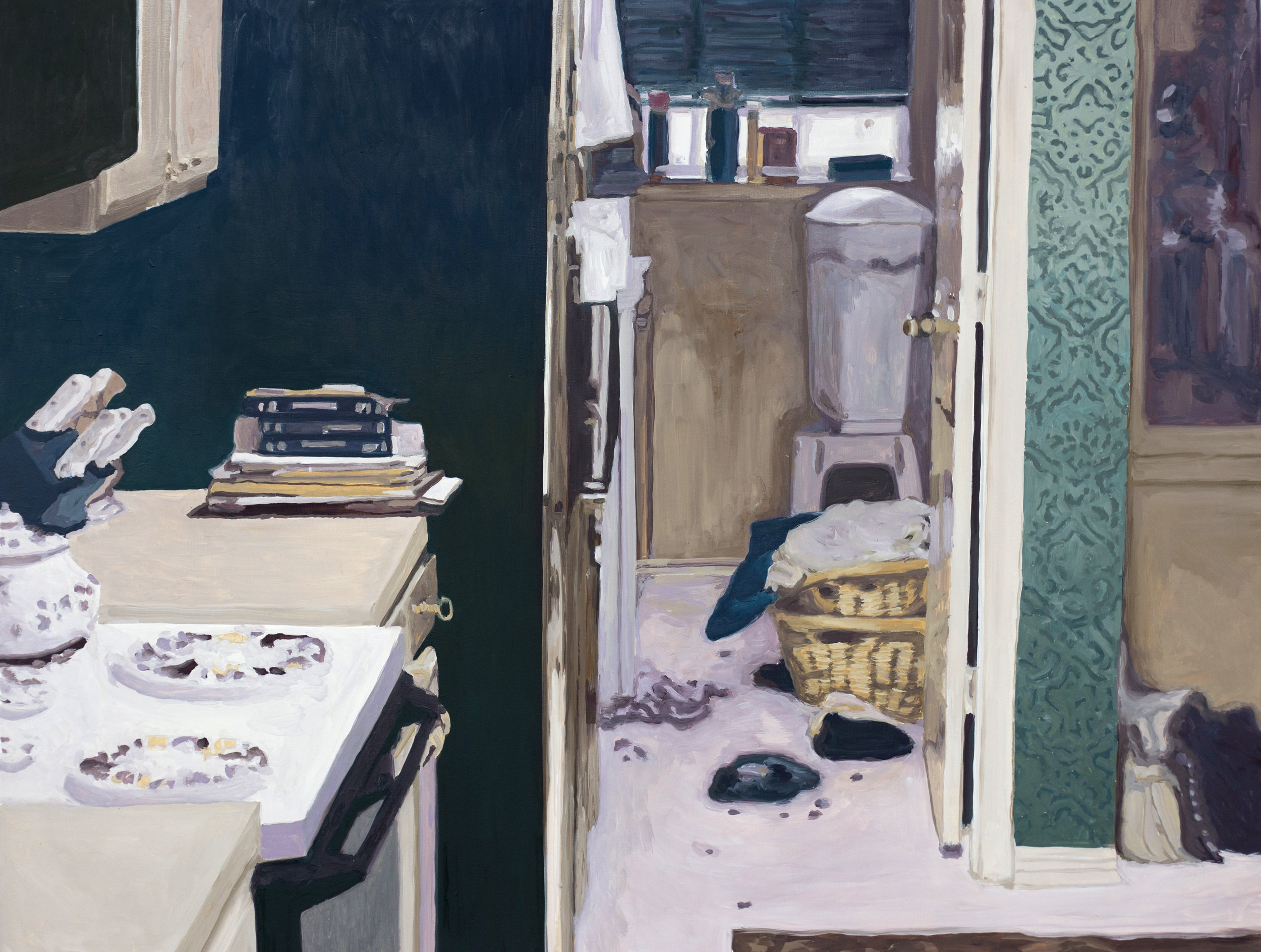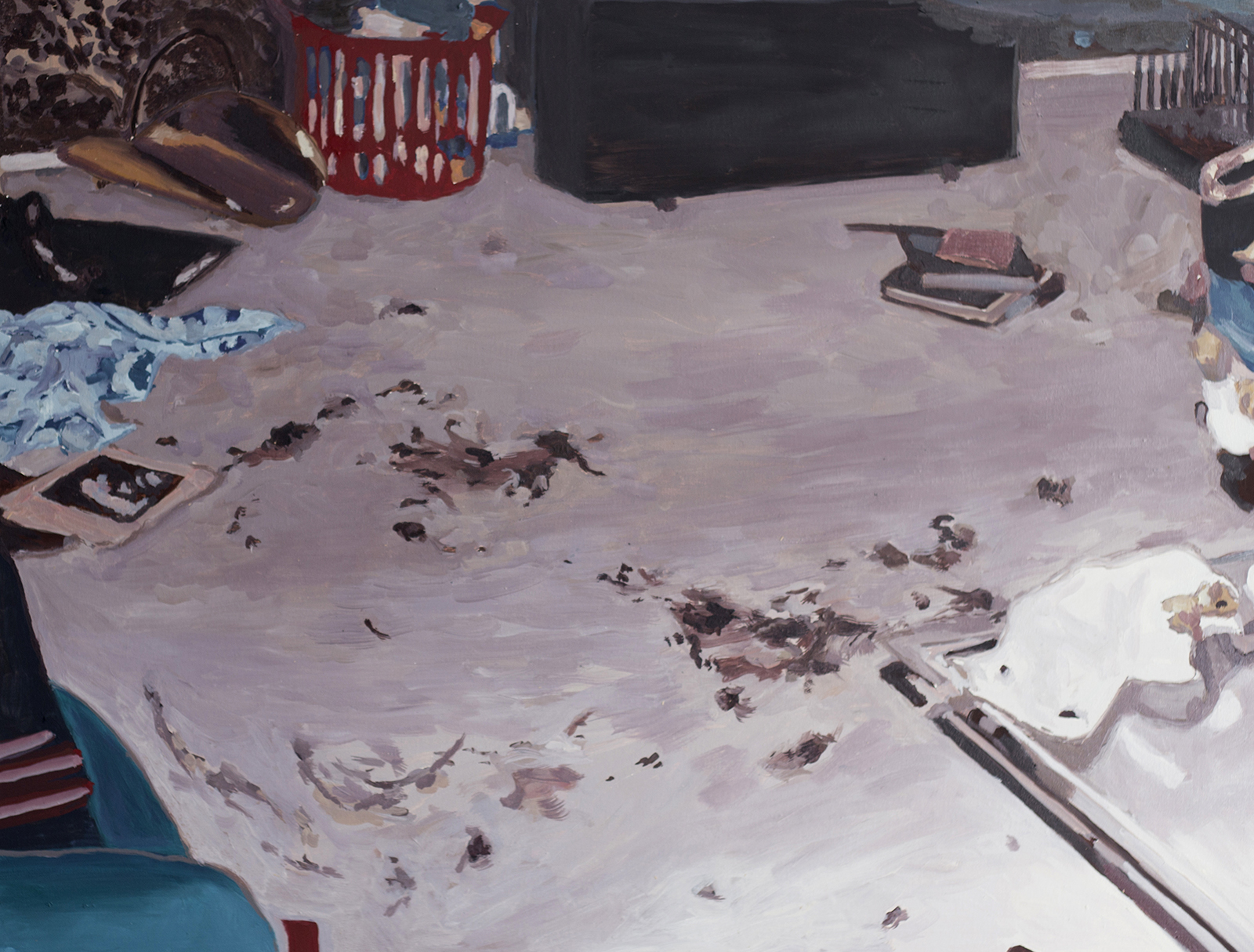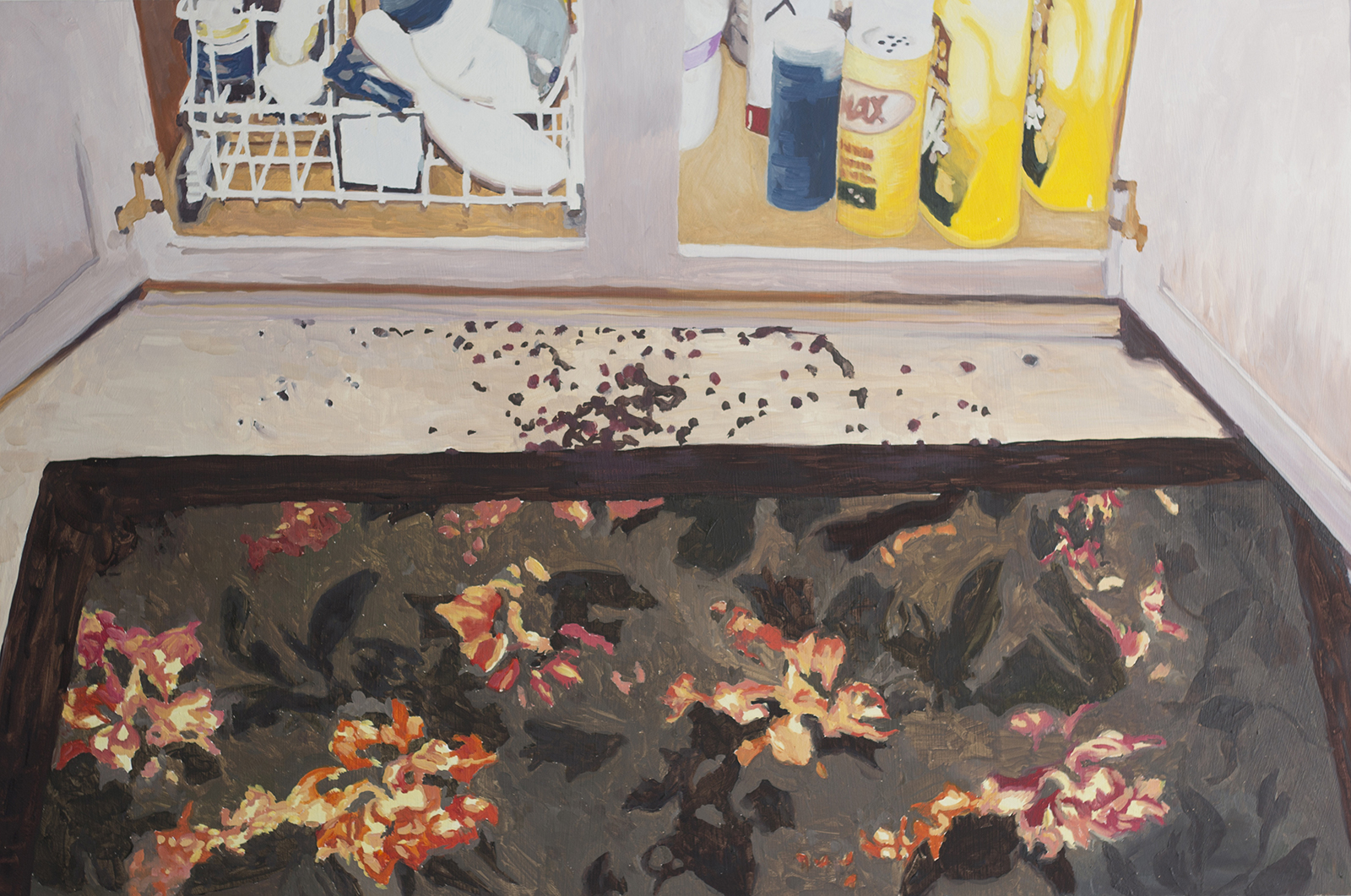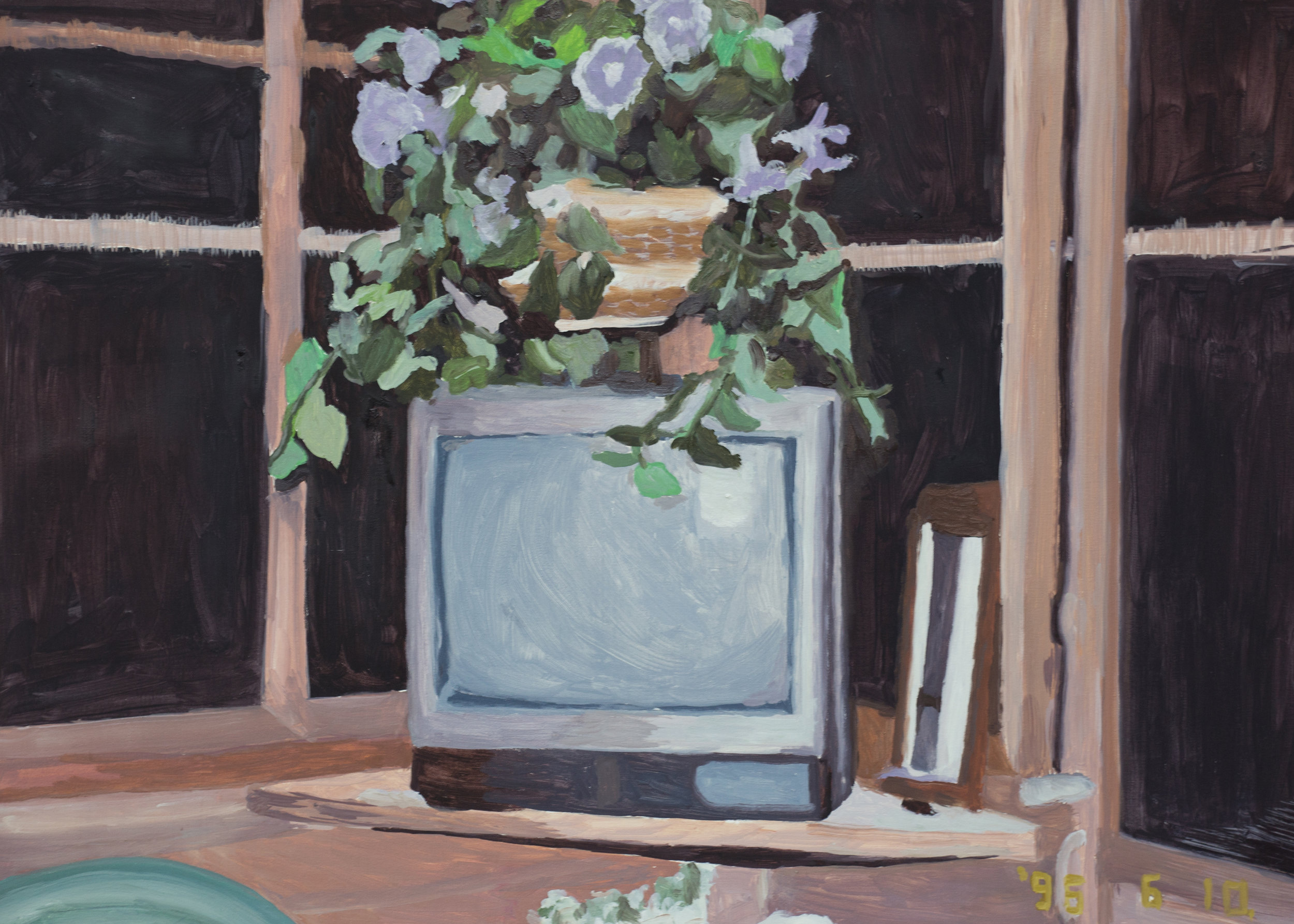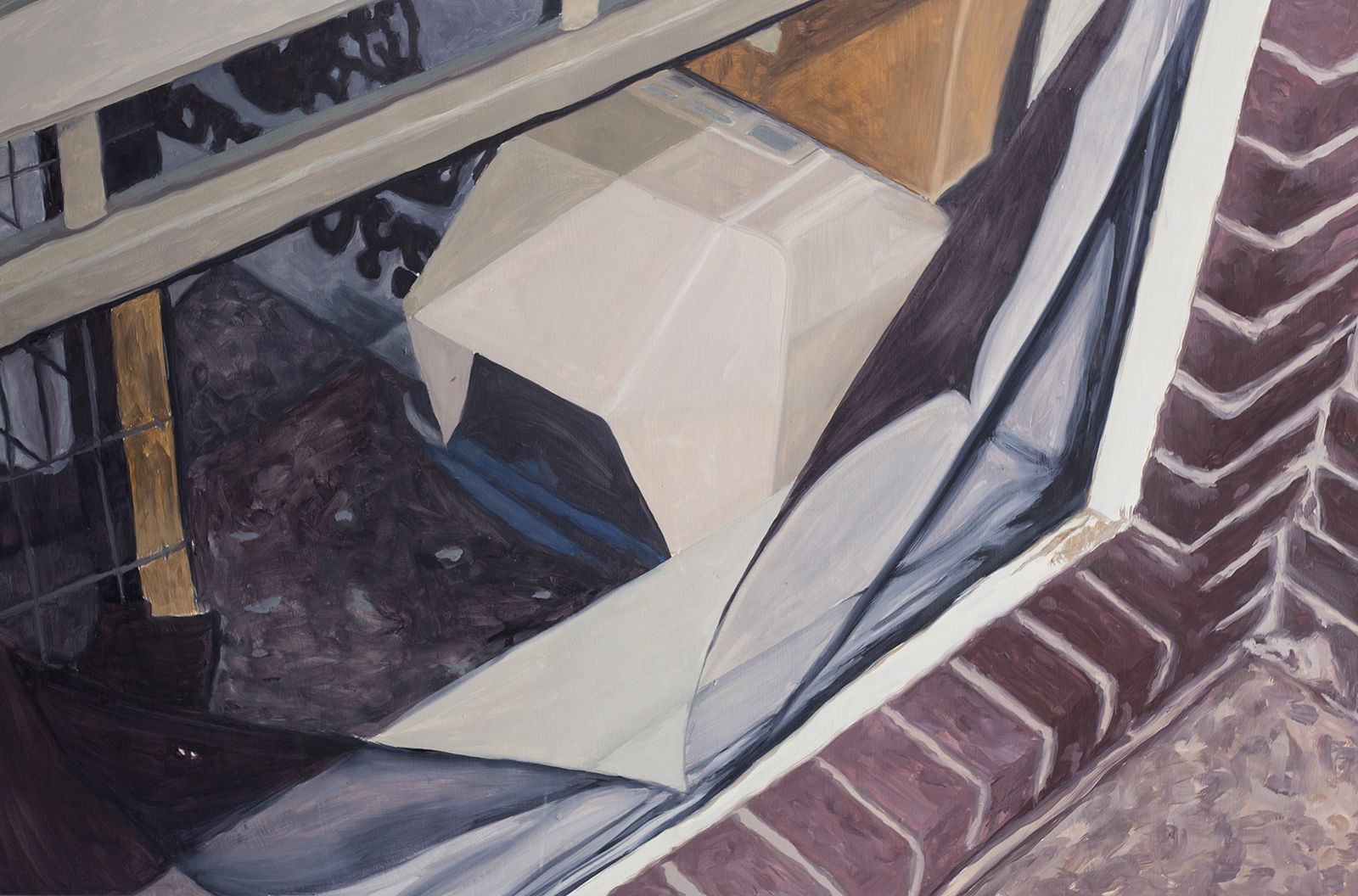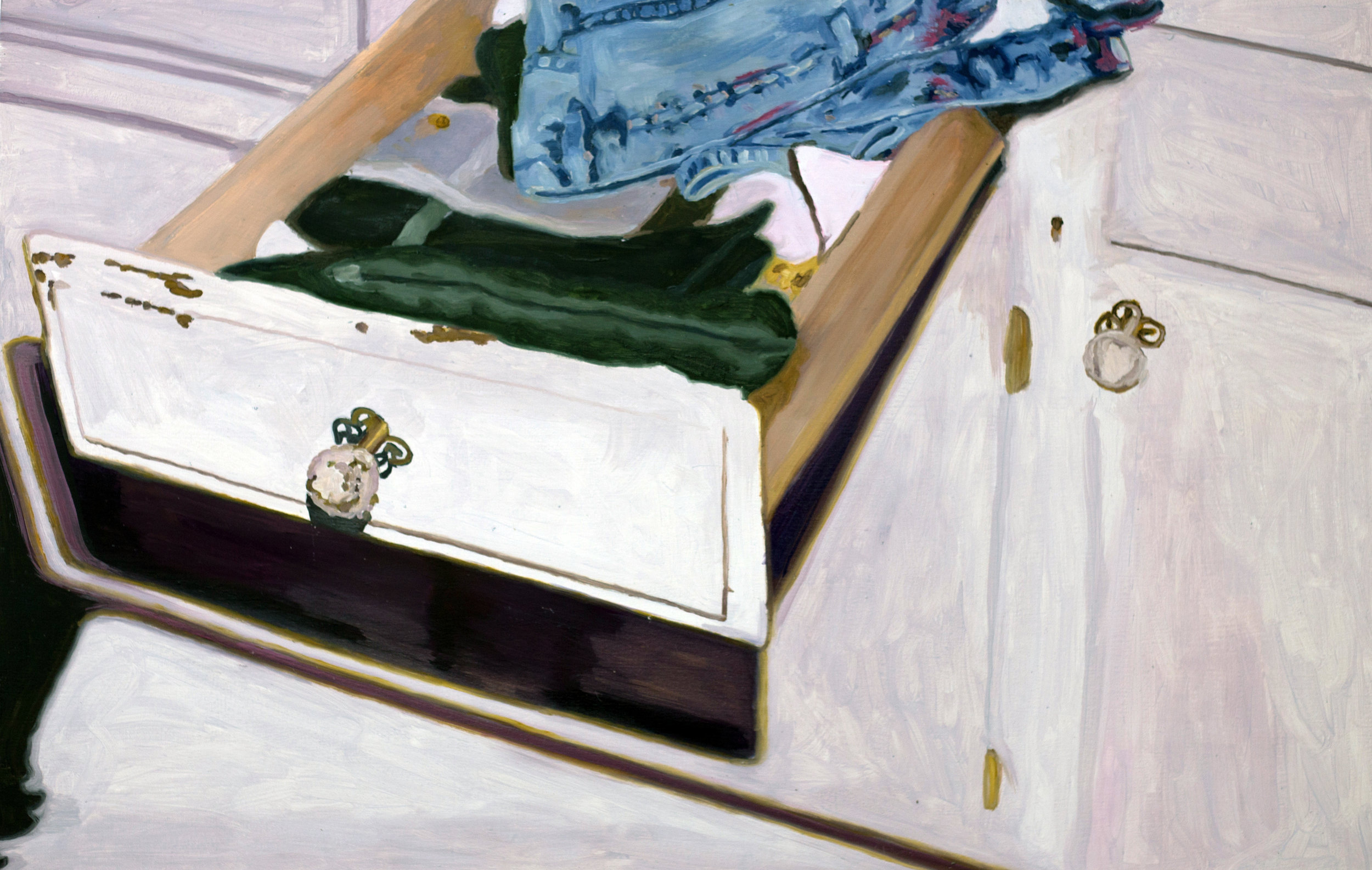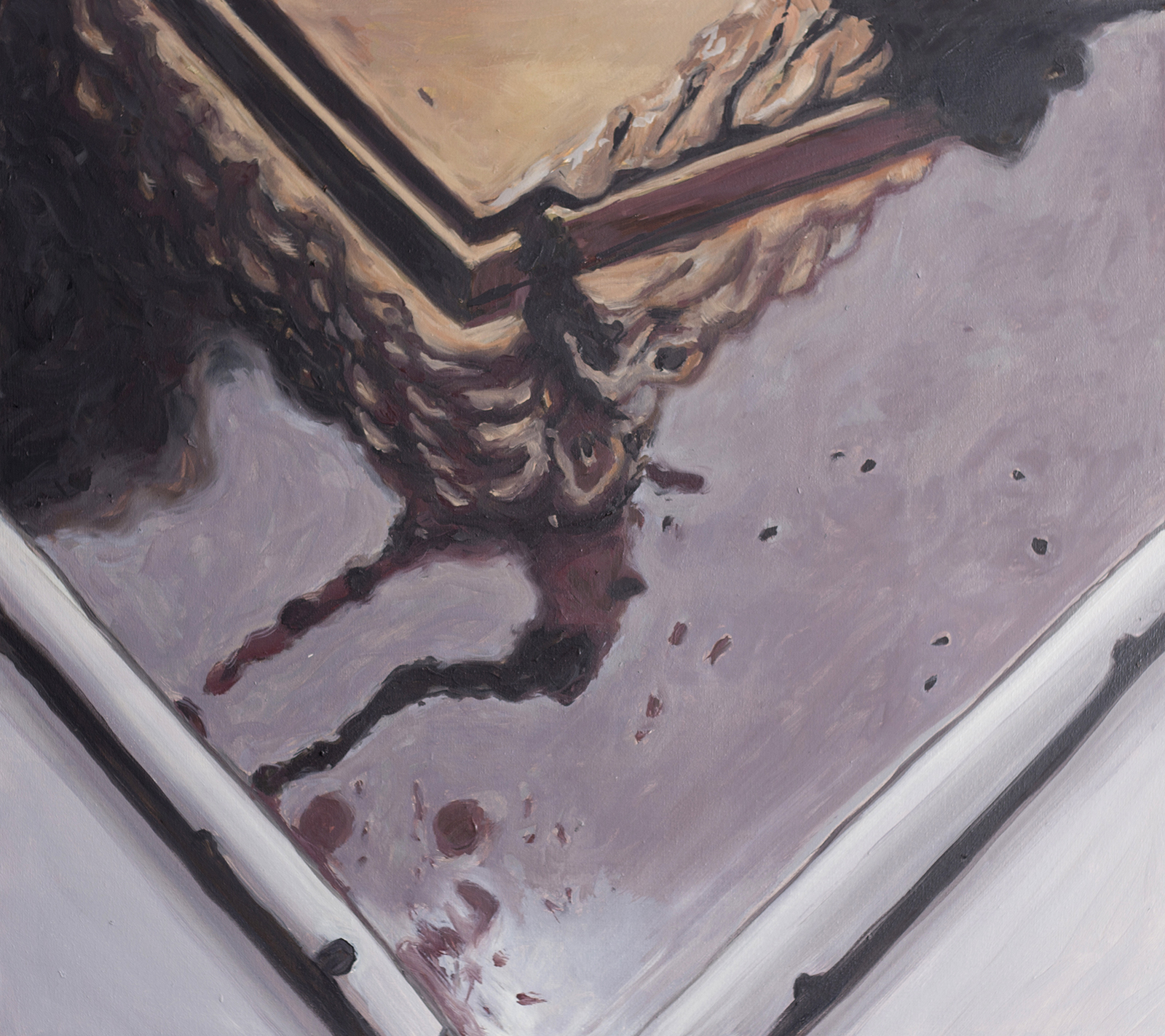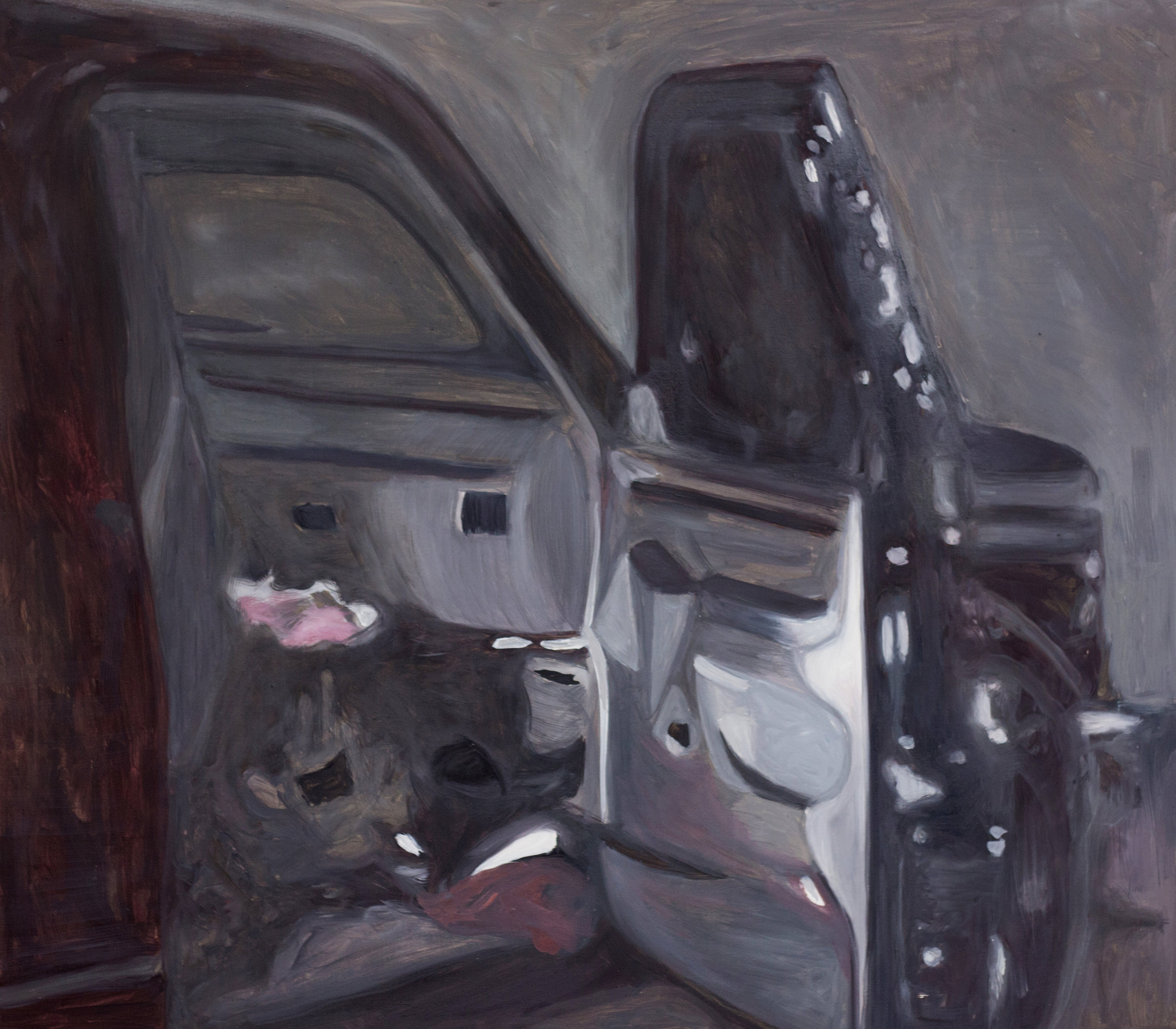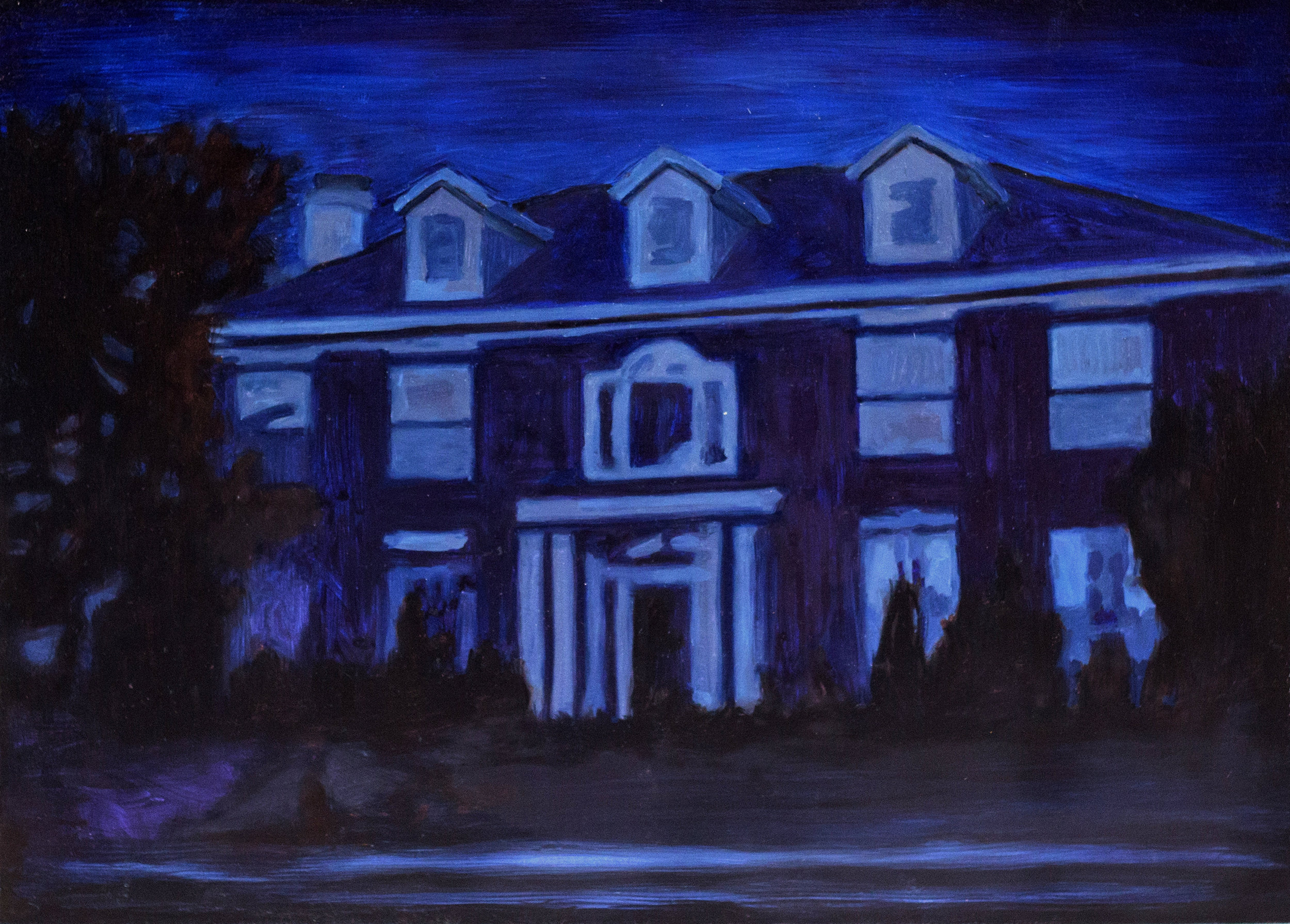Before the Forum: Paço Imperial, Rio de Janeiro (2017).
“This perpetual error which is precisely 'life' does not bestow its thousand forms merely upon the visible and the audible universe but upon the social universe, to the sentimental universe, to the historical universe, and so forth [...] We have of the universe only formless, fragmentary visions, which we complete by the association of arbitrary ideas, creative of dangerous suggestions."[1]
The work of Victor Mattina does not allow for a comfort zone; it explores surprise and astonishment, and shows from the outset that the artist does not believe in a work of art made only to render the world more beautiful. The choice of situations related to mockery, rituals, crimes, mental health and death is part of the fundamental aesthetic of the artist.
In this exhibition, many pictures of different sizes give form to an intense pictorial narrative. Based in criminal photographs taken by forensic experts, the works can be seen as a film edited by many cuts, including the reflective spaces of the blank wall. Despite the association game invariably created by the viewer based on the ambiguity between the technical vision of the forensic expert and the paintings, each of the pictures is unique and has a private meaning, like as an incisive cut in a reality fraught with menaces, a field of action full of remains.
The bloodstained, broken, knocked down, fallen or apparently abandoned objects introduce chaos in the domestic order. We can see that the objects constitute the only organising force among those complex dramatic developments and our attention is always in action and revisited as if the works were helping us to re-enact the crime many times in each of the paintings.
The scenes generate thoughts about the victim and the perpetrator living intensely the moment prior to the crime, a vital energy elevated to its most extreme potency. The articulation of a precarious truth emerges in the observation that the area of each of the scenes is an abstract plot in which the traces of a crime generate primarily a force field, a dynamic and elastic territory that gives shape to a conflict.
In this sense, the exhibition room acts as a forum and rests balanced upon three fundamental elements: a dispute over the object or place, an interpretation that translates the language of things and a public assembly that starts to be organised when the viewer steps into the scene. The prosopopoeia happens and the inanimate objects acquire psychological narrative, become the main witness,
In the exhibition room, the questions and answers finally emerge and sway between the exhibition space, the contents of the paintings and the public; everything is mediated by positions, angles and logical connections. Questions about complicity, judgement, relinquishment and impotency create uncertainty in the viewer. Despite posing questions about many political and social processes, Victor Mattina's aim is not to reveal injustices, pass judgement or even to review history, but only to deform and widen indefinitely the time of an action, maybe showing us that we can dwell forever in this paralysis.
Criminal evidence seen through an artistic representation can interfere in formal phenomena and expand our perception, indicating that the struggle with contemporary and bureaucratic issues deserve to be explored by artists. The dialogue with an artwork such as the intervention of the Turkish artist Banu Cennetoğlu on the ancient façade of the Fridericianum Museum in Kassel during Documenta 14 is evident and, up to a certain measure, Mattina too seems to be saying that, nowadays, Being Safe is Scary.
The locus of the forum, on the other hand, is no longer the limited arena of a building and is not restricted to the exhibition room. It expands itself speculatively to the vast abstraction of the electronic media, where the dialogue goes on, unfolds and promotes a new forum format in which many communities act, react and interact in response to various situations mediated by their cultures, prejudices, concepts and beliefs. Thus, the contemporary articulation of the public truth happens ever more evasively, materialising itself also in the concept of post-truth, a term coined in 1992 by Serb-American playwrightSteve Tesich.
The work of Victor Mattina, according to Walter Benjamin, shows that the present never stops to reconfigure itself in front of an image - no matter how factual, forensic and indisputable that moment might be - because the past, as well, never stops to acquire new configurations and the image can only be conceived as a construction of the memory.
Evangelina Seiler
[1] Marcel Proust. In Search of Lost Time. Translation by D.J. Enright.
Text by the curator Evangelina Seiler
Translation: Marcello Lino
